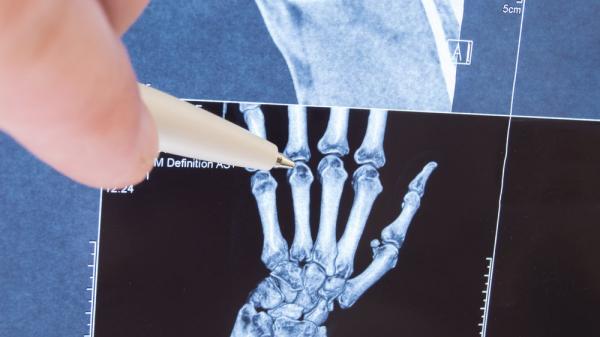
An introduction to the most common types of surgery for rheumatoid arthritis (RA), including tips on when to talk to your doctor about surgery and how to get prepared.
Why do people with rheumatoid arthritis have joint surgery?
Most types of surgery for arthritis are performed to:
- relieve severe pain that has not responded to other treatments
- improve movement and use of a joint, for example improve flexibility of your hip to allow you to walk and sit more comfortably
- improve alignment (position) of joints, for example straighten finger joints to allow you to grip and hold objects.
This can help make daily activities easier and improve your quality of life.
All surgery has risks. Make sure you understand the possible risks, their likelihood and their consequences before you decide to have surgery.
When should I talk to my doctor about joint surgery?
If you have any of the following signs you should talk to your doctor about the possibility of surgery.
- You have pain that stops you going to sleep at night.
- Your pain does not improve with rest, medicines, exercise or other treatments.
- Your affected joint makes it difficult for you to look after yourself (such as showering, getting dressed, preparing meals, getting out of a chair) and you require help from others for everyday tasks.
- Your condition makes it difficult for you to work or look after people who require your care.
- Your pain is keeping you from doing things you enjoy, such as exercising or doing hobbies.
Who decides if I need surgery?
If you and your doctor think you may require surgery, your doctor will refer you to an orthopaedic surgeon. The surgeon will assess you and recommend whether or not you will benefit from surgery. In some cases surgery may not be recommended. If surgery is recommended it is still your decision whether to have it.
Before you decide, make sure you understand:
- what are the possible benefits?
- what are the specific risks with this type of surgery?
- whether there are any other options?
- what will happen if you don’t have this surgery?
- the likely cost.
Remember not having surgery is always one of your options. Your doctor or surgeon should be happy to arrange a second opinion if you want one.
What are the common types of surgery for rheumatoid arthritis?
- Arthrodesis: involves fusing (joining) the two bones forming the joint together. As the fused joint cannot be moved it is no longer painful. This type of surgery is most commonly done on ankles, wrists, fingers or thumbs.
- Resection: is the removal of part or all of a bone or an entire joint. This is often done for damaged joints in the foot and big toe.
- Synovectomy: is an operation to remove the lining of the joints, the synovium. This is effective for rheumatoid arthritis, to reduce pain, swelling and joint damage. However the synovium may regrow several years later and the symptoms can return.
- Joint replacement: is also called arthroplasty. This involves the removal of damaged surfaces of the joint. These surfaces are then replaced with metal, ceramic or plastic parts. The entire joint can be replaced (total arthroplasty) or just one part of the joint (hemiarthroplasty). Joint replacements can be done on knees, hips, shoulders, elbows, fingers, ankles, toes and even the spine.
Is surgery risky?
All surgery has risks. There are general risks with having any type of operation, as well as specific risks related to the type of surgery. Make sure you understand the possible risks, their likelihood and their consequences before you decide to have surgery. You should discuss this carefully with your surgeon.
Getting ready for surgery
Here are some tips to help you prepare for surgery:
- Plan for recovery and returning home. During your recovery, which may take days, weeks or even months, you may need help with daily tasks such as cooking and showering. Make sure you have family and/or friends available to help you during this time. If you do not have help available, talk to your doctor about local support services or staying at a rehabilitation centre after surgery.
- You may be required to attend an assessment at the hospital before your surgery. This is a good chance for you to ask questions about your surgery and recovery. Also you may be able to talk to a physiotherapist or occupational therapist about any equipment you may need, such as crutches and handrails in the shower.
- Lose weight if you are overweight.
- Stop smoking.
- Start an exercise program. People with greater fitness and muscle strength usually recover more quickly from surgery. If you have severe pain, you may find water exercise more comfortable. See a physiotherapist for hydrotherapy or contact your local Arthritis Office for details of warm water exercise classes.
- You will probably need to follow a physiotherapy or exercise program after surgery. Be ready for several weeks or even months of exercise. Remember, the amount of effort you put into your program can make a big difference in how well you recover.
CONTACT YOUR LOCAL ARTHRITIS OFFICE FOR MORE INFORMATION ON ARTHRITIS AND SUPPORT SERVICES.











